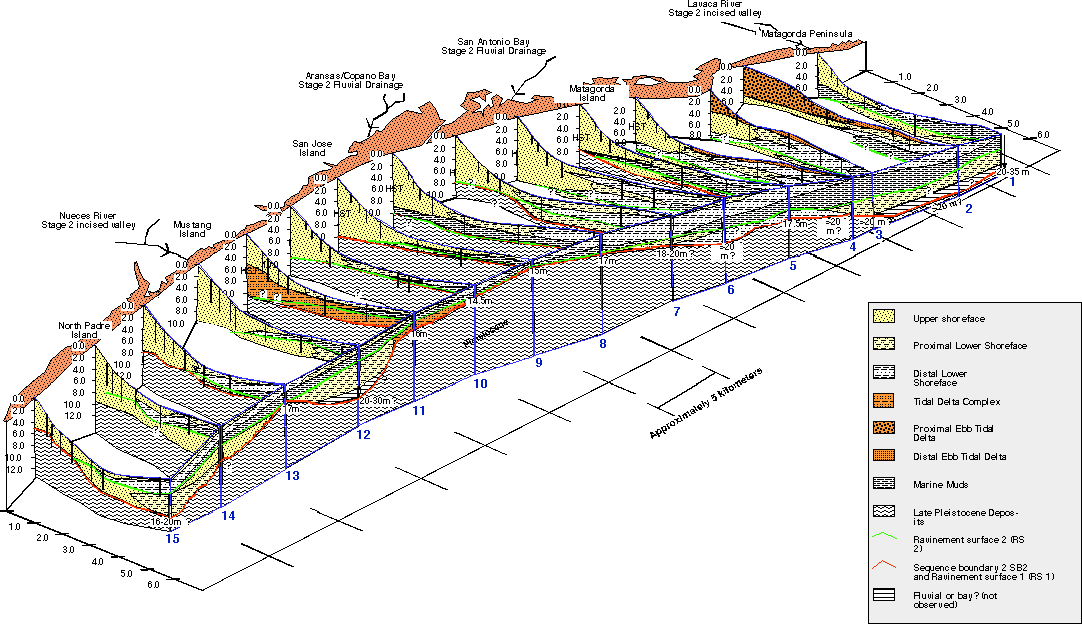Near-shore core dataset
Highstand strata of the central Texas shelf are dominated by prograding clastic shoreline deposits - see Rodriguez et al. (2001) for further details. In order to gain a better understanding of these deposits we undertook an investigation of the coastal deposits associated with the modern highstand.
The near-shore core dataset consists of 15 profiles, 7 cores per profile. Each core is up to
5 m long and samples upper shoreface, proximal lower shoreface, distal lower
shoreface, marine, and Pleistocene sediments. The bounding surfaces are from top to bottom, the downlap surface, ravinement surface 2, and the basal Stage 2 sequence boundary.
Profile numbers 1-15 are clickable to detailed individual profiles.
Scroll down and right to view full figure.

This is a fence diagram showing the trends of shoreface profiles 1-15. The Stage 2
sequence boundary is deepest in profiles 1-4, 12. The sequence boundary depth is related
to the presence or absence of fluvial incision. The Lavaca and Nueces rivers (profiles 1-4,
12, respectively) incised up to -36 meters within the bays during the Stage 2 lowstand.
High accommodation space combined with high sediment supply has resulted in thick
successions of shoreface 1 sediments preserved within these valleys below ravinement
surface 2. Subsequent progradation related to the modern shoreface 2 has prograded
and downlapped onto marine and distal lower shoreface sediments. Shoreface 1 is
contained within the transgressive systems tract and shoreface 2 is currently
prograding within the highstand systems tract.
Near-shore
core dataset
- Evolution
of the Central Texas shoreface
-
- Central
Texas versus East Texas shoreface preservation
potential
Offshore
dataset
- Highstand
systems tract
- Lowstand
systems tract
- Transgressive
systems tract
Controlling
factors on shoreline configuration



